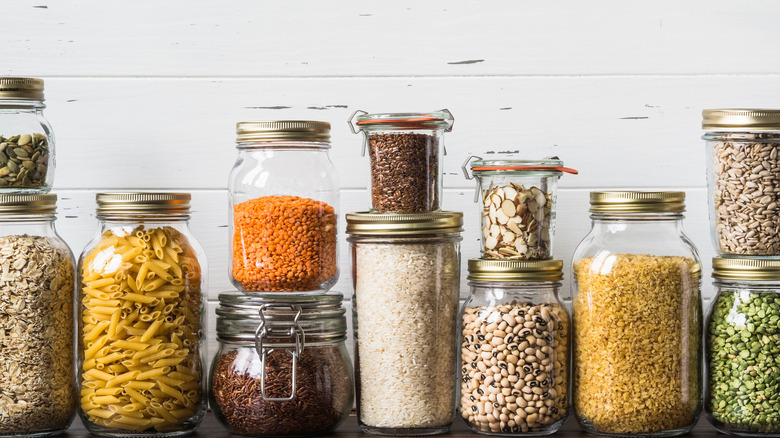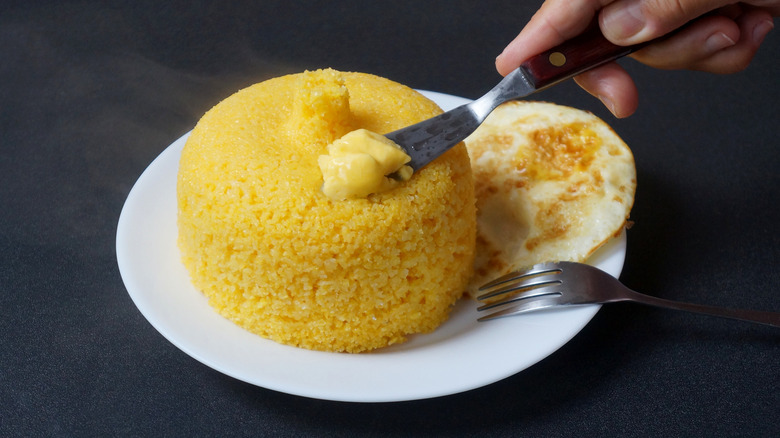The Real Difference Between Couscous And Rice
Both couscous and rice are typically served as popular starchy side dishes. Because of their neutral flavors, they often take on the flavors of the dish of which they're a part. As a result, both rice and couscous can be used in savory or sweet dishes. Couscous can be prepared by steaming, and rice can be steamed also. Rice is also boiled and stewed if being turned into a rice porridge, such as congee.
However, that's more or less where the similarities end, as they're actually completely different foods that come from entirely different sources.
Rice is a pure grain, technically the seed of grass plants such as Oryza sativa (Asian rice) or Oryza glaberrima (African rice) (via Veetee). Wild rice is something of a misnomer — the dark brown, purple, or black grains are not related to true rice and come from plants in the Zizania genus (via Encyclopedia Brittanica)
How couscous differs from rice
Rice is one of the most widely eaten foods in the world and is consumed as part of cuisines in countries around the globe. In fact, more than 50 percent of the world's population relies on rice as a staple component in their diets (via The New Humanitarian). In Asia, rice accounts for between 35 percent to 80 percent of a person's calorie intake (via Livestrong).
Couscous is more of a location-specific food. While it's hugely popular in North Africa and some regions of the Mediterranean and the Middle East, it's not used as widely in cuisines as rice is (via Once Upon a Chef).
Though many people think that it's a grain just like rice, couscous is actually tiny balls of durum wheat, making it technically a pasta, rather than a grain. Though the recorded use of couscous goes back for 1,000 years, rice has it beat in that department, as the cultivation of rice has been a thing since at least 2,500 BCE.

